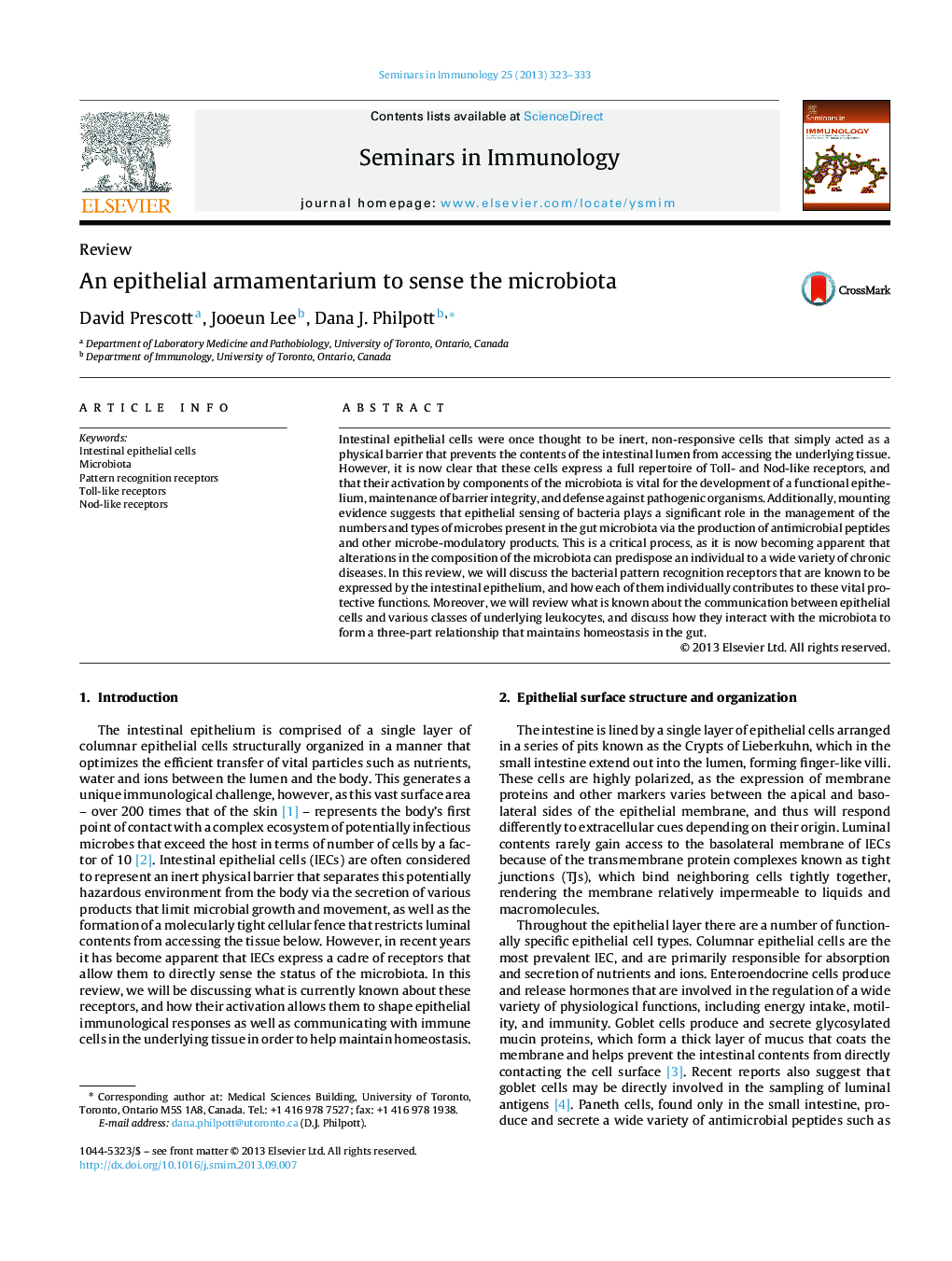| Article ID | Journal | Published Year | Pages | File Type |
|---|---|---|---|---|
| 3391491 | Seminars in Immunology | 2013 | 11 Pages |
•Intestinal epithelial cells express a wide variety of pattern recognition receptors.•Detection of the microbiota through these receptors plays a major role in the maintenance of epithelial homeostasis and integrity.•Microbe-derived signals induce the epithelial production of modulatory products that limit and shape the composition of the microbiota.•Intestinal epithelial cells send and receive information about the status of the microbiota to subepithelial leukocytes, which further contributes to the management of a healthy epithelium.
Intestinal epithelial cells were once thought to be inert, non-responsive cells that simply acted as a physical barrier that prevents the contents of the intestinal lumen from accessing the underlying tissue. However, it is now clear that these cells express a full repertoire of Toll- and Nod-like receptors, and that their activation by components of the microbiota is vital for the development of a functional epithelium, maintenance of barrier integrity, and defense against pathogenic organisms. Additionally, mounting evidence suggests that epithelial sensing of bacteria plays a significant role in the management of the numbers and types of microbes present in the gut microbiota via the production of antimicrobial peptides and other microbe-modulatory products. This is a critical process, as it is now becoming apparent that alterations in the composition of the microbiota can predispose an individual to a wide variety of chronic diseases. In this review, we will discuss the bacterial pattern recognition receptors that are known to be expressed by the intestinal epithelium, and how each of them individually contributes to these vital protective functions. Moreover, we will review what is known about the communication between epithelial cells and various classes of underlying leukocytes, and discuss how they interact with the microbiota to form a three-part relationship that maintains homeostasis in the gut.
